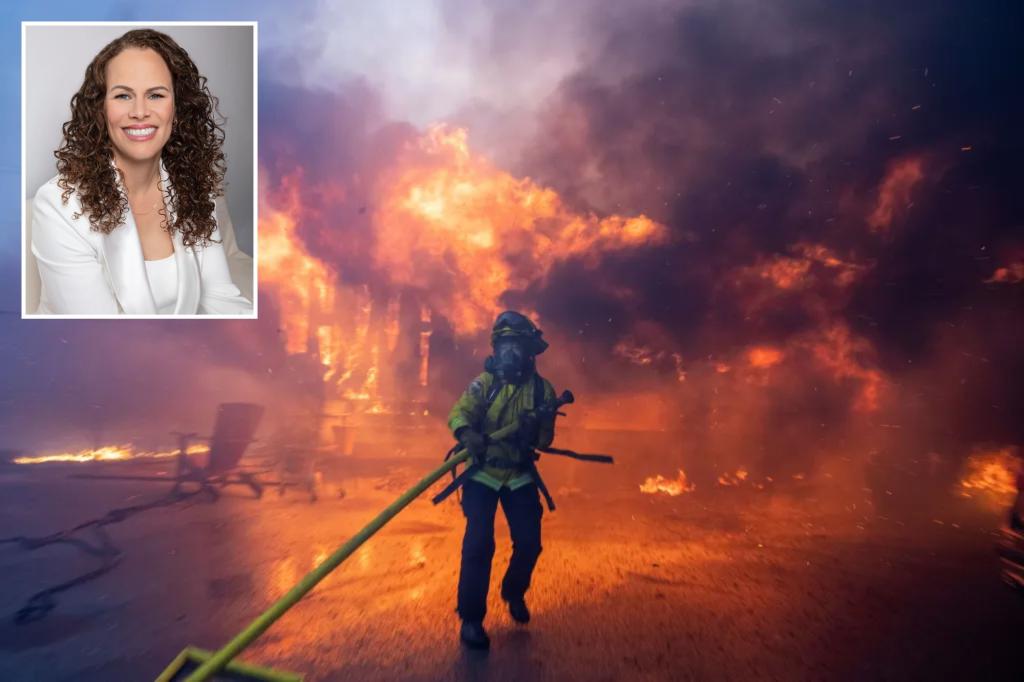The escalating threat landscape targeting public figures and corporate leaders has cast a stark light on the vulnerability of individuals in positions of power. The recent assignment of a 24/7 police security detail to Janisse Quinones, the CEO of the Los Angeles Department of Water and Power (LADWP), underscores this growing concern. The decision, prompted by threats against Quinones and other LADWP employees, comes amidst the backdrop of devastating wildfires sweeping through Southern California and follows closely on the heels of the shocking shooting of United Healthcare CEO Brian Thompson in New York. These incidents highlight the increasingly volatile environment in which public officials and corporate executives operate, necessitating enhanced security measures to protect their safety and well-being. The threats against Quinones, coupled with public criticism of her leadership during the wildfire crisis, further complicate the already challenging circumstances surrounding the disaster response.
Quinones’ substantial annual salary of $750,000 has become a focal point for public scrutiny, particularly in the context of the ongoing wildfires and their impact on Los Angeles residents. Critics have questioned the city’s preparedness for such disasters and the effectiveness of its water distribution efforts. This scrutiny, combined with the threats directed at Quinones and LADWP employees, paints a picture of escalating tensions and anxieties surrounding the crisis. The LADWP’s confirmation of threats against its employees, including incidents at a downtown facility, further reinforces the gravity of the situation. While the department refrains from discussing specific security measures for the protection of its personnel, the very acknowledgement of these threats underscores the need for heightened vigilance and protective measures.
The LADWP’s statement emphasizing the tireless work of its employees in supporting the city’s wildfire response reveals the critical role these individuals play in combating the crisis. Their dedication, often under extremely challenging and dangerous conditions, is essential to protecting lives and property. The department’s assertion that there is “no place in society or in our City for any threats to their safety” reflects a growing recognition of the need to protect essential workers and public servants from violence and intimidation. This sentiment is echoed across various sectors, as essential workers in healthcare, transportation, and other critical industries increasingly face threats and harassment related to their work.
The threats against Quinones and LADWP employees occur against a backdrop of intense public debate about the city’s fire preparedness and water distribution strategies. Critics argue that the city’s response to the wildfires has been inadequate, highlighting concerns about the allocation of resources and the effectiveness of preventative measures. This criticism has intensified in the wake of the devastating fires, with many questioning whether more could have been done to mitigate the damage and protect communities. The ongoing debate about the city’s response underscores the importance of transparency and accountability in disaster management, as well as the need for effective communication with the public during times of crisis.
Quinones’ previous statements about her commitment to viewing her position through an “equity lens” and using it to advance social justice add another layer of complexity to the situation. While some applaud her focus on equity and social justice, others view it as a distraction from the immediate priorities of managing the water department and responding to the wildfire crisis. This divergence of opinion further polarizes public sentiment surrounding her leadership, making it even more challenging to address the threats and criticisms directed at her and her department. The debate over the intersection of social justice initiatives and essential service delivery underscores the complex and often contentious nature of leadership in the public sector.
The convergence of these factors—the escalating threats, public criticism, the wildfire crisis, and the ongoing debate about social justice—creates a highly charged environment for Quinones and the LADWP. The decision to provide her with a 24/7 security detail reflects the very real dangers faced by public figures in today’s world, particularly those who hold positions of authority and influence. The incident also highlights the increasing need for robust security measures to protect those who serve the public, especially during times of crisis. The ongoing challenges faced by Quinones and the LADWP serve as a stark reminder of the complex and evolving nature of leadership in the 21st century.

